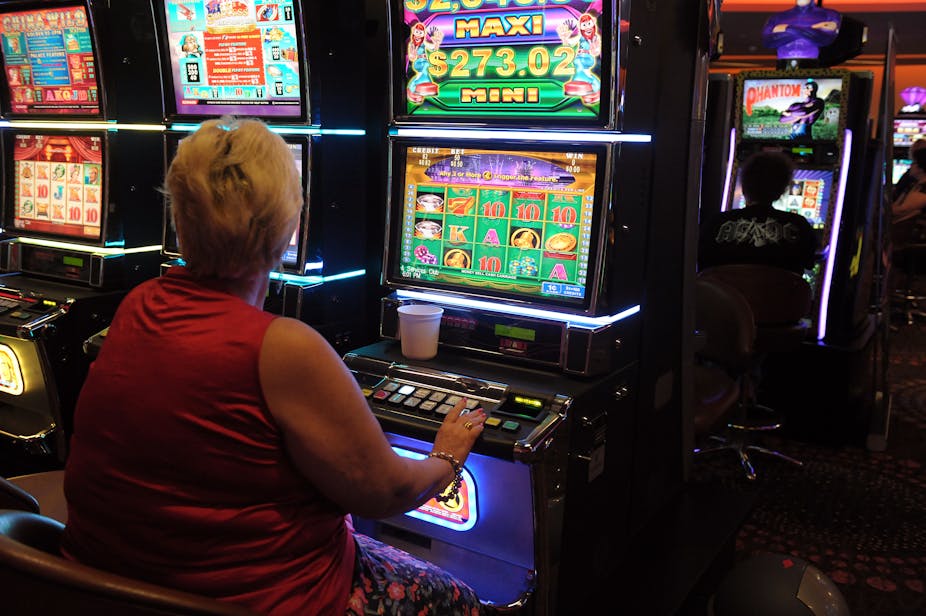A new wave of casino liberalisation is sweeping Australia. The Queensland state government has announced that it is seeking expressions of interest for a casino development in Brisbane, and that it is considering offering two further licenses.
This move was foreshadowed in May last year, when it was announced that the government’s “master plan” for Brisbane might include another casino, after years of lobbying for casino expansion by Echo Entertainment and James Packer.
But with recent research suggesting that poker machines in casinos are more dangerous than those in clubs or hotels, there is good reason to worry that the expansion of existing casinos and the development of new ones will only increase the harm gambling does to the Australian community.
The idea of a second casino on the Gold Coast has also been advocated by the area’s mayor for some time, with the Queensland state government giving qualified approval. A recent proposal for a new casino in Cairns has been granted a streamlined approvals process.
This news out of Brisbane comes days after SkyCity and the South Australian state government finalised a deal to increase the size of the Adelaide casino, with 505 more pokies, 95 additional table games and 300 new automated gaming table terminals.
Just three months ago, the NSW state government approved James Packer’s unsolicited proposal to develop a new casino in Sydney. The rapid expansion of casino venues comes after a less visible growth in casino sizes, with the number of pokies and table games within Australian casinos rising by 14% and 39% respectively between 1999 and 2009.
Governments are keen to tout anticipated benefits to tourism provided by so-called “six star hotels”, and try to downplay the potential harms arising from gambling. Indeed, it seems that “casino” has become something of a dirty word in state government circles. NSW premier Barry O’Farrell insisted on calling the proposed Barangaroo casino a “VIP gaming facility”, while the Queensland government speaks about “integrated developments”.
This spin provides a clue to the underlying economic reality: casinos can promote local economic development only to the extent that they bring in new tourist dollars. When locals spend money at casinos, it drains income from other businesses, or syphons household savings into the pockets of multinational corporations and billionaires like James Packer.
It is unsurprising, therefore, that both the casino proponents and the governments that license them are keen to emphasise that they are targeting international high-rollers. In South Australia, for example, deputy premier John Rau claimed that the redevelopment would attract gamblers who could afford to lose “tens of thousands of dollars in an evening”.
But it is not only the super-rich who will be losing those “tens of thousands in an evening”. Entry to a VIP room isn’t required to lose big. In the pokie halls, machines are designed so that gamblers can lose A$1200 an hour. In NSW, pokies can even be loaded $10,000 at a time.
Given the impending proliferation of new casinos, it is timely to remember that the casino industry - and the profitability of Packer’s Crown Limited, and Echo Entertainment - is underwritten by locals who lose more than they can afford. In 2009-10, casino visitors lost over $3.5 billion in Australia.

Most gamblers are locals, with international visitors making up just 5% of customers at Australian casinos. Most casino revenue does also not come from VIPs, who in 2007-08 contributed only 17% of casino gambling revenue. Instead, 40% of casino gambling profits came from pokie players, with the remaining 43% being lost in the main gaming table halls.
Given that an estimated 41% of pokie expenditure comes from problem gamblers - as does between 12% and 32% of casino table game expenditure - between 20% and 30% of gambling revenue at Australia casinos may be derived from problem gamblers. This, however, is under the doubtful assumption that no VIP gamblers are experiencing gambling problems. Casinos, therefore, are unlikely to be viable in their current form without causing serious harm to their best patrons.
Some acknowledgement of this is implicit in the agreement between the South Australian government and SkyCity. The agreement includes so-called “responsible gambling” measures such as voluntary pre-commitment and funding for the rehabilitation services for problem gamblers. As evidence suggests that voluntary pre-commitment is unlikely to substantially reduce levels of gambling harm, the funding for rehabilitation can only be understood as a partial attempt to rebuild the lives that an expanded casino will play a crucial role in shattering.
Might it not be better to reduce the harm caused by casinos in the first place? Such an approach, which seeks to prevent gambling-related harm, has been likened to placing a fence at the top of a cliff, rather than placing an ambulance at the bottom.
However, with new casinos proliferating and harm minimisation proposals such as mandatory pre-commitment A$1 maximum bets defeated - in part due to the casino lobby itself - it seems that the odds of an evidence-based approach to casino regulation in Australia remain long.

